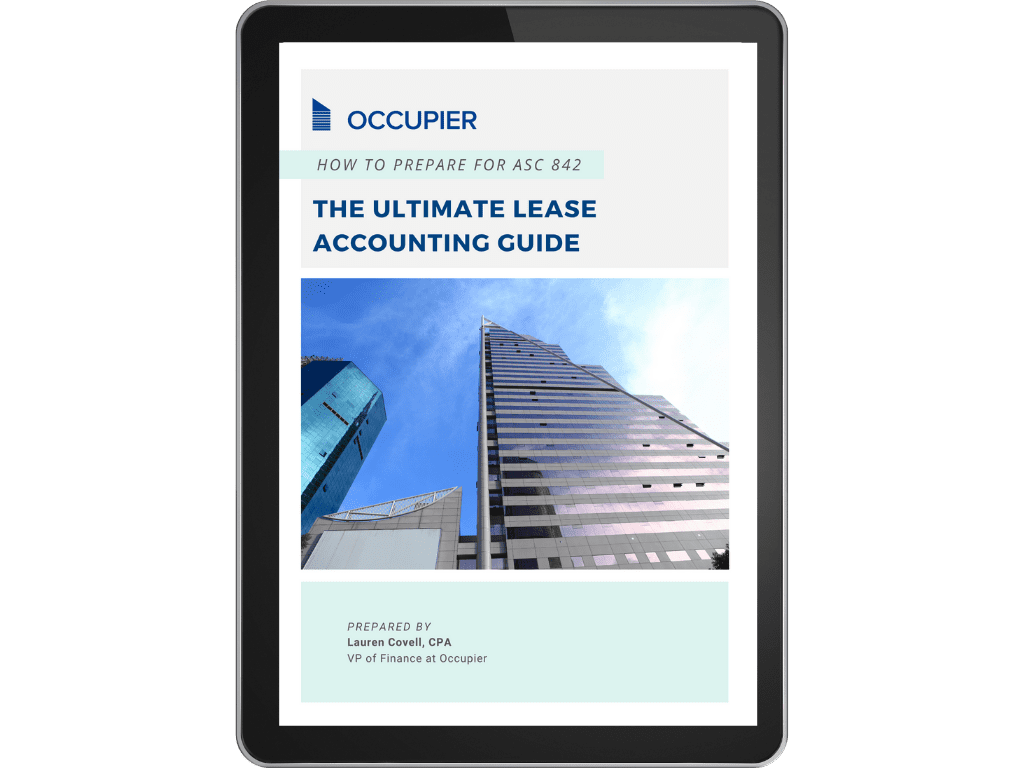Free Download
Guide to Lease Accounting Compliance
Strategize your ASC 842 lease accounting implementation journey from transition to ongoing compliance.

Already transitioned?
Don’t get too comfortable just yet! Ongoing compliance with ASC 842 is crucial to ensure that your financial statements accurately reflect your leasing activities. Between new leases, lease modifications, and annual audits, your lease accounting and lease administration team have their work cut out for them.
SVP of Finance, Lauren Bahr shares her top 5 tips to ongoing lease accounting compliance processes. Watch it here!
Frequently Asked Questions:
ASC 842 is a new lease accounting standard that requires companies to record both operating and finance leases on their balance sheets, increasing transparency and providing a clearer picture of financial obligations.
ASC 842 affects all organizations that enter into lease agreements, including large publicly traded companies and small private businesses. By the end of 2021, all these entities must comply with the new standards, which require them to report right-of-use (ROU) assets and lease liabilities for nearly all leases.
Under ASC 842, companies must recognize lease liabilities and right-of-use assets, which impacts financial statements by including previously off-balance-sheet leases.
Best practices include ensuring alignment among stakeholders, developing improved lease management processes, partnering with the right software solutions, and establishing sustainable practices for ongoing compliance.